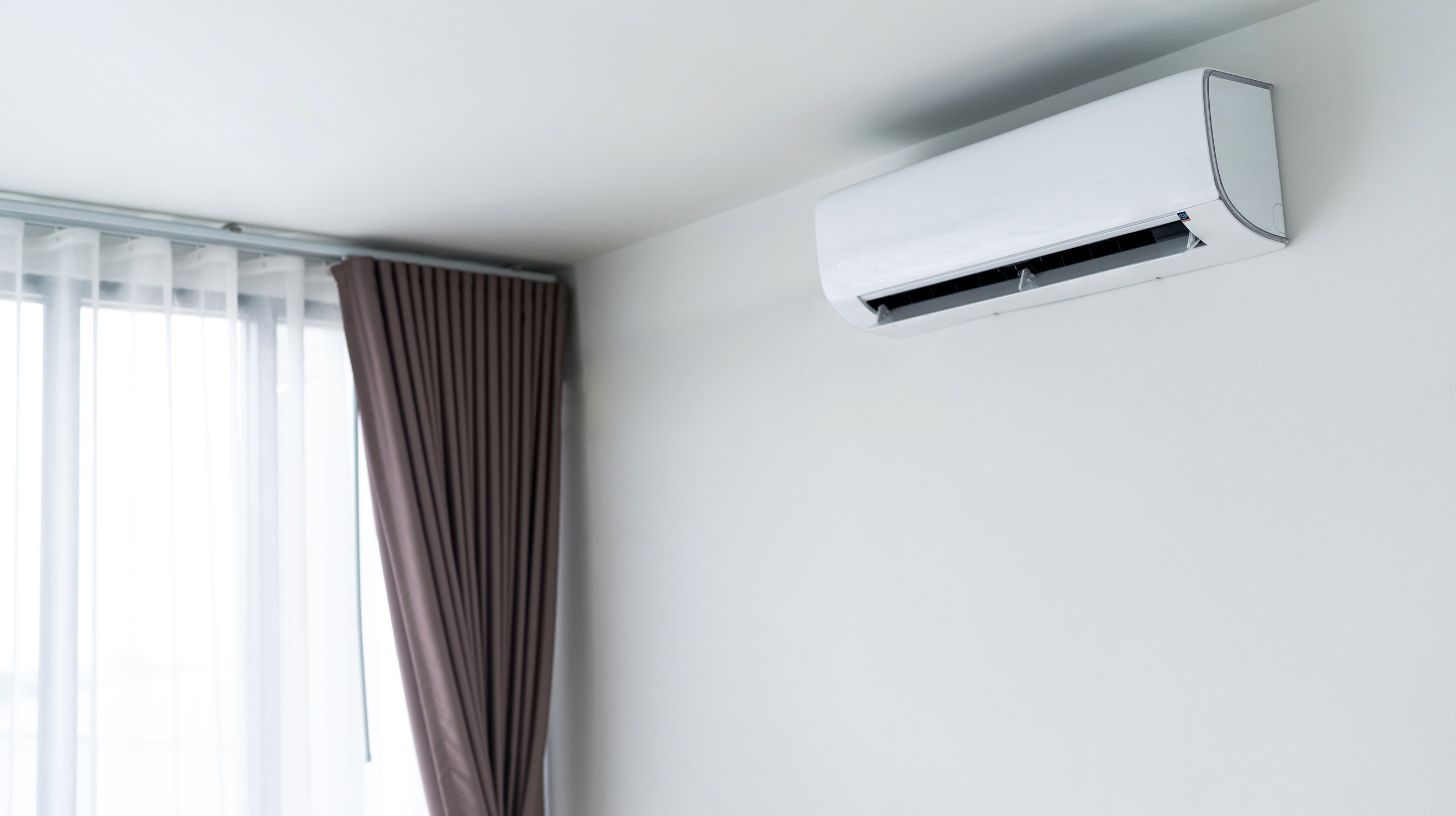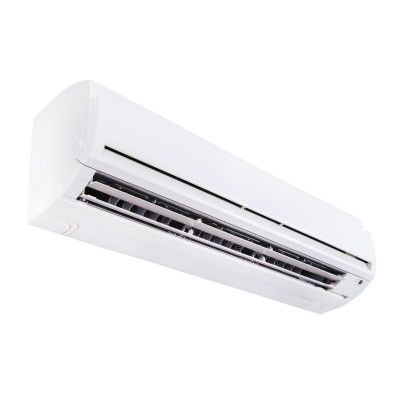What s a mini split AC?
TLDR: This comprehensive article explores mini split AC systems, their advantages over central AC, types available, and the choice between them. Mini splits consist of indoor and outdoor units connected by tubing, offering energy efficiency, individualized control, and better air quality. Semper Fi Heating and Cooling specializes in these systems and can help you choose the right one for your needs. Ultimately, the choice between mini splits and central AC depends on factors like budget, space, and specific cooling requirements.
In this comprehensive article, we aim to provide you with a clear and in-depth understanding of the fundamental principles behind mini split AC units and the multitude of benefits they offer when compared to the conventional central AC systems. Additionally, we will delve into the diverse categories of mini split AC units available in the market and conduct a thorough comparison with the traditional central AC system. By discerning the distinctions between these cooling solutions, you will be empowered to make an informed choice that aligns perfectly with the specific cooling needs of your home.
How Does a Mini Split AC Work?
Semper Fi Heating and Cooling has expertise in mini split ACs. A mini split AC consists of a wall-mounted indoor air handling unit that is connected to a powerful, yet small, outdoor compressor. This type of air conditioner is typically a ductless system, meaning it does not require ductwork for operation. The two units are connected via a line set consisting of two copper tubes and one power cable. Generally, the outdoor compressor unit is connected to the wall-mounted indoor unit via a line set, which runs through a small hole in the wall and is also hidden behind a vinyl siding. The outdoor unit is responsible for compressing and condensing the refrigerant, converting the hot air from the indoor unit to a cooled form before it is released out of the outdoor unit. Meanwhile, the indoor unit takes in air from inside the room and distributes it to the various rooms in the home. Mini split ACs offer improved energy efficiency compared to traditional air conditioning systems, as well as a smaller footprint and the ability to customize their coverage area. What’s more, mini split ACs are often quieter than other types of air conditioners, making them a great choice for those living in noise-sensitive areas. Ultimately, if you’re looking for a powerful, cost-effective way to cool your home, a mini split AC is a great choice.
Advantages of Mini Split AC Systems
Semper Fi Heating and Cooling is renowned for its proficiency in efficiently installing and servicing mini split AC systems. Mini split AC systems bring a number of advantages to homeowners. For starters, they are an energy efficient heating and cooling solution, consuming much less energy to run than traditional HVAC systems. This energy efficiency means higher energy cost savings over time, making mini split AC systems a great economical choice.
Additionally, compared to traditional HVACs, mini split AC systems use less space in the home, which makes them particularly attractive for smaller homes and properties. Through their small ductless design, they can more efficiently reach all parts of the home for superior air control. The resulting air quality is superior because these systems create better airflow and avoid allergens. This is made possible with the multi-zone approach mini split AC systems take, where each zone is individually controlled with its own thermostat for more accurate temperature regulation.
Despite the small size of mini split AC systems, they can produce the same cooling and heating power as any other HVAC unit, making them powerful and reliable systems. Semper Fi Heating and Cooling can help ensure smooth installation and running of these systems, with their professionalism and expertise in the field. On top of that, mini split AC systems are designed to run quietly and free of sound disturbances, for a greater comfort at home. All in all, mini split AC systems boast numerous advantages, and with Semper Fi Heating and Cooling’s help, they can make a great air conditioning option for any home.
Types of Mini Split AC Units
Semper Fi Heating and Cooling specializes in the installation of efficient and powerful mini split AC systems. Mini splits are air conditioners that are typically composed of two main components that are connected through tubing and wiring: an indoor evaporative unit and an outdoor condensing unit. While a traditional air conditioning system would service an entire home with one large unit located outside, mini splits offer more individualized control for individual rooms, zones, or open spaces.
Semper Fi Heating and Cooling offers a variety of mini split systems to choose from, allowing customers to find the ideal solution for their cooling needs. The company installs single zone, multi-zone, ductless, and heat pump mini splits. Single zone systems are the most common and have one indoor head with an outdoor condenser. These are perfect for those looking for a little extra cooling in one room or area. Multi-zone systems have two to five heads and one outdoor compressor. This allows people to have flexibility in cooling specific areas and are great for larger homes. Ductless mini splits provide easy installation and can be used in a variety of contexts, including commercial and residential settings, and are ideal for rooms without access to traditional ductwork. Heat pump mini splits are the most efficient type of mini split available. Utilizing a heat pump additionally allows people to use their mini split for both cooling and heating their home.
Semper Fi Heating and Cooling’s staff are extensively trained in the installation and service of mini split systems. The company’s technicians can ensure the buyer gets the perfect system at the best value. The company is familiar with available rebates for most buys and can assist customers in taking advantage of them. With a wide range of mini splits available, Semper Fi Heating and Cooling has the experience and know-how to ensure customers have the perfect solution for their cooling needs.
Mini Split AC vs. Traditional Central AC
When choosing between a mini split AC and a traditional central AC for cooling your home, there are a few factors to consider. One of the most important aspects to consider when deciding on the right air conditioning system for your home is convenience and efficiency. Mini split air conditioners can be used to moderate the temperature of individual rooms or zones within a home, giving users more control over climate regulation, and increased energy efficiency. These air conditioners also tend to be definitive in terms of cost savings, with an initial install that’s often comparable or lower than a central AC unit of the same size. Central AC systems are a very popular option and have been the traditional and most common choice for decades. However, due to the larger nature of these systems, maintenance costs tend to be higher since the entire system must be inspected and serviced, rather than individual components. If you live in an area that requires a more efficient AC system, Semper Fi Heating and Cooling will provide you with knowledgeable opinions and state-of-the-art solutions suited to your home’s needs, helping you to determine which AC system is best for your budget and household. With their extensive experience in air conditioning, they can offer reliable guidance on the benefits and drawbacks of both mini split ACs and traditional central ACs. Ultimately, the right air conditioning system for your home will depend on your specific needs, location, budget and size of the space in need of cooling.
Final Thoughts
Mini split ACs are a great way to conveniently and efficiently cool one or more areas in a building. They work by evenly distributing air throughout a space using air handlers connected to a main outdoor unit. This way, individual rooms can be set to different temperatures and needs. Many people favor these systems because they offer flexibility, require no ductwork, are quiet, and are easier to install than many central ACs. There are a variety of mini splits available, with each having different features in regards to energy efficiency, performance, cost, and installation. Ultimately, mini split ACs are much more suitable and cost-effective for many applications, while traditional central ACs may hold an advantage in some cases.
Frequently Asked Questions
What is a mini-split AC system?
A mini-split AC system is a type of air conditioning system that consists of two main components, an indoor unit and outdoor unit. The indoor unit is mounted in the room or area to be cooled and consists of an evaporator, blower, and compressor. The outdoor unit is mounted outside the home or building and consists of a condenser and compressor unit. The two units are linked together by refrigerant lines which allow for the transfer of hot and cold air between the two components. This type of system is ideal for those who lack sufficient ductwork and allow for better temperature control and energy savings.
How does a mini-split AC work?
A mini-split AC system is an air conditioning system that is made up of two separate units. The outdoor unit contains a compressor and condenser coil, while the indoor unit consists of an evaporator coil and a fan. The two units are connected together by a refrigerant line. The outdoor unit draws in warm, outside air and passes it through the evaporator coil. This causes the air to become cold, and the fan then circulates the cool air inside the room or house. The refrigerant then travels back through the refrigerant line to the outdoor unit, where it is compressed and cooled, before being sent back to the indoor unit to start the cycle again.
What are the main components of a mini-split AC?
The main components of a mini-split AC include an outdoor unit, an indoor unit, and two lengths of copper tubing connected between the two. The outdoor unit contains a compressor, condenser, fan, and expansion valve. The indoor unit contains an evaporator, a blower, and an air filter. Typically, both the outdoor and indoor units are connected to a wall control panel, allowing for full control over functions such as temperature and fan speed.
What are the advantages of using a mini-split AC?
The main advantages of using a mini-split AC are:
1. Flexibility: Mini-split AC units are small and require minimal installation, allowing them to be placed almost anywhere.
2. Independent temperature control: Each unit of a mini-split system can be controlled independently, allowing each room to be tailored to the temperature preference of its occupant.
3. Lower energy bills: Many mini-split AC units are much more energy efficient than traditional central air systems. This can help save money on monthly utility bills.
4. Silent operation: Mini-split AC systems are much quieter than central air systems, providing a more comfortable atmosphere.

